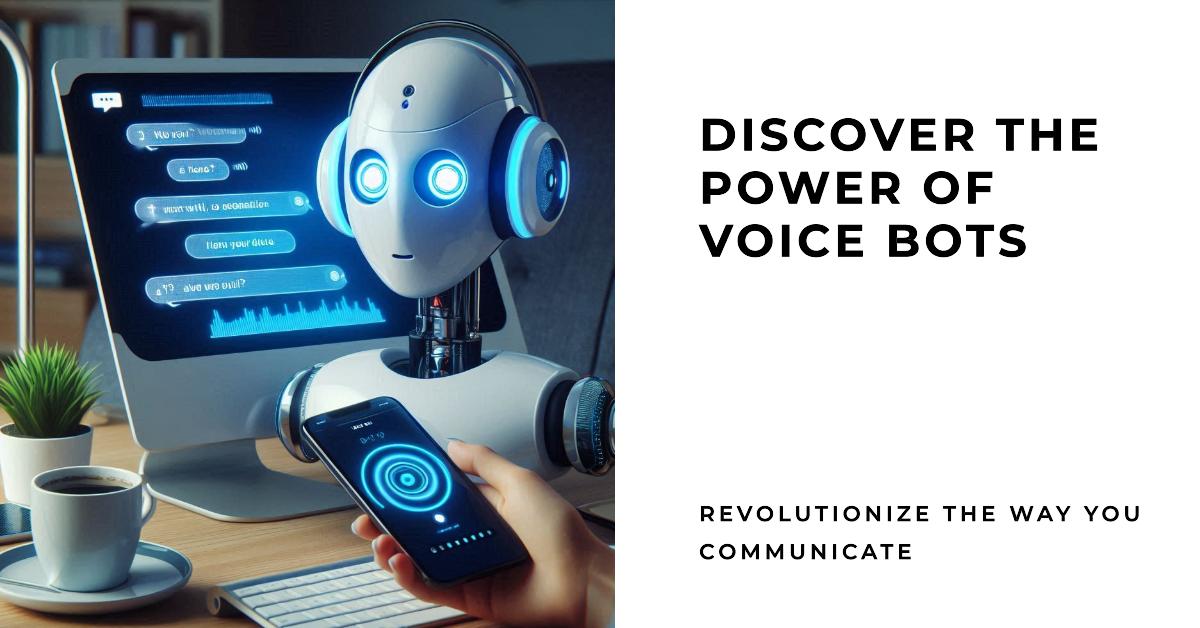 What is a Voice Bot?A voice bot, also known as a voice assistant or conversational AI, is a sophisticated software application that uses artificial intelligence to interpret human speech, understand user intent, and provide relevant responses or actions through synthesized speech. Unlike traditional Interactive Voice Response (IVR) systems, voice bots can engage in more natural, dynamic conversations, adapting to user inputs and context.
What is a Voice Bot?A voice bot, also known as a voice assistant or conversational AI, is a sophisticated software application that uses artificial intelligence to interpret human speech, understand user intent, and provide relevant responses or actions through synthesized speech. Unlike traditional Interactive Voice Response (IVR) systems, voice bots can engage in more natural, dynamic conversations, adapting to user inputs and context.Key Components of Voice Bots
- Automatic Speech Recognition (ASR): This component converts spoken words into text, allowing the system to understand what the user is saying. ASR technology has advanced significantly in recent years, now capable of recognizing various accents, dialects, and even filtering out background noise.
- Natural Language Understanding (NLU): Once the speech is converted to text, NLU algorithms analyze the text to interpret the user’s intent and extract relevant information. This involves parsing the text, identifying key phrases, and understanding context and nuances in language.
- Text-to-Speech (TTS): After processing the user’s input and generating a response, TTS technology converts the text response back into spoken words. Modern TTS systems can produce incredibly natural-sounding speech, often indistinguishable from human voices.
- Input/Output Method: Voice bots primarily use speech for both input and output, whereas chatbots typically rely on text-based interactions.
- Complexity of Processing: Voice bots require additional layers of processing (ASR and TTS) compared to text-based chatbots.
- Use Cases: Voice bots are particularly useful in hands-free scenarios, such as while driving or in smart home applications, where chatbots might be less convenient.
- Natural Interaction: Voice interactions can feel more natural and conversational compared to typed interactions, potentially leading to higher user engagement and satisfaction.
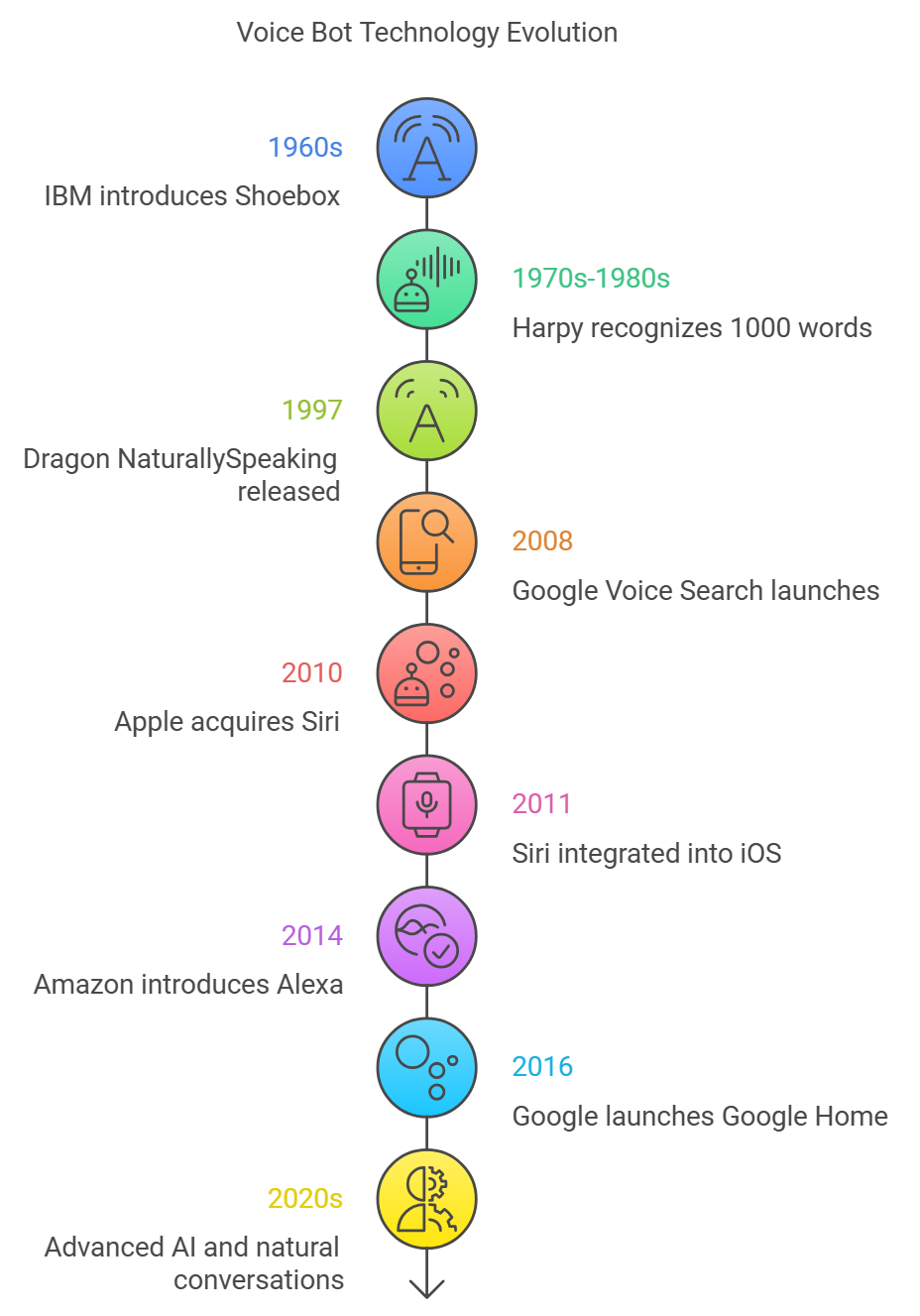 How Do Voice Bots Work?
How Do Voice Bots Work?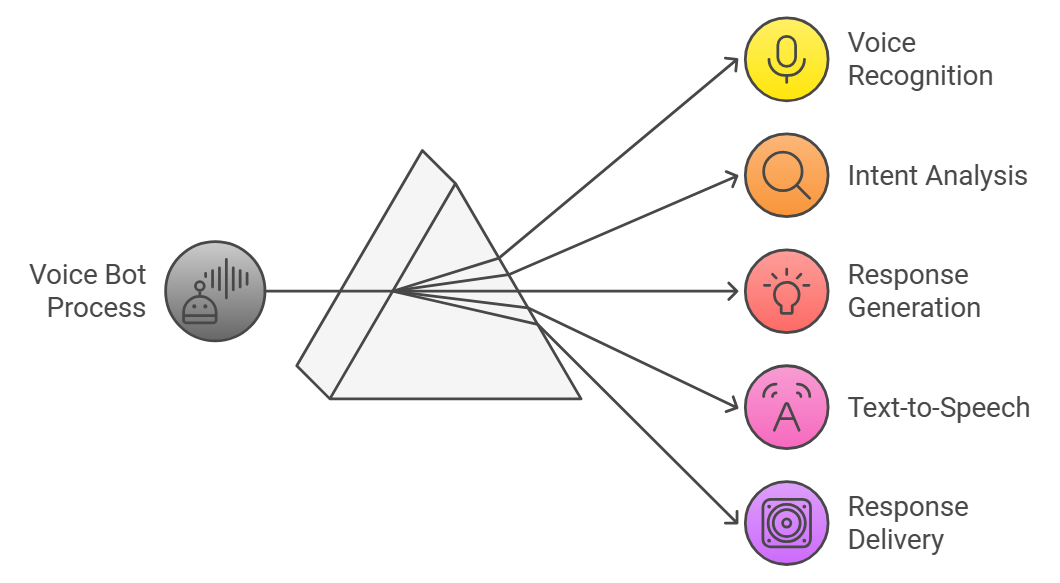 Voice bots operate through a sophisticated process that combines several AI technologies to understand, interpret, and respond to human speech. The process begins with voice recognition, where the user’s speech is converted into text using Automatic Speech Recognition (ASR) technology.
Voice bots operate through a sophisticated process that combines several AI technologies to understand, interpret, and respond to human speech. The process begins with voice recognition, where the user’s speech is converted into text using Automatic Speech Recognition (ASR) technology.Next, Natural Language Understanding (NLU) analyzes the text to determine the user’s intent. Based on this analysis, the voice bot generates a response, either by retrieving pre-programmed answers or using AI algorithms for more complex interactions.
Finally, the response is converted back into speech using Text-to-Speech (TTS) technology and delivered to the user. This seamless integration of technologies enables voice bots to engage in natural, context-aware conversations with users.
Core Technologies Powering Voice Bots
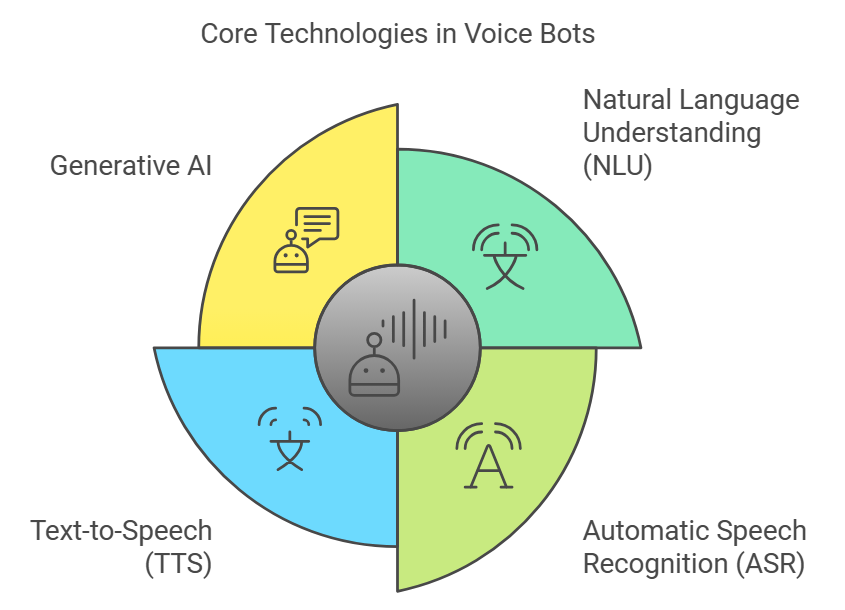 The foundation of voice bot technology lies in four core components: Natural Language Understanding (NLU), Automatic Speech Recognition (ASR), Text-to-Speech (TTS), and Generative AI. NLU enables voice bots to comprehend the meaning and context of user inputs, going beyond simple keyword recognition.
The foundation of voice bot technology lies in four core components: Natural Language Understanding (NLU), Automatic Speech Recognition (ASR), Text-to-Speech (TTS), and Generative AI. NLU enables voice bots to comprehend the meaning and context of user inputs, going beyond simple keyword recognition.ASR has evolved to handle diverse accents and languages, continuously improving its accuracy through deep learning models. TTS technology has advanced significantly, now capable of producing near-human quality speech with appropriate intonation and emotion. The integration of Generative AI models, such as GPT, has further enhanced voice bots’ ability to engage in dynamic, context-aware conversations.
At MissNoCalls, we leverage these cutting-edge technologies to create highly sophisticated voice bots that can handle complex customer interactions with ease. Our AI-powered voice solutions are designed to provide seamless, natural conversations that enhance customer experiences across various industries.
Types of Voice Bots
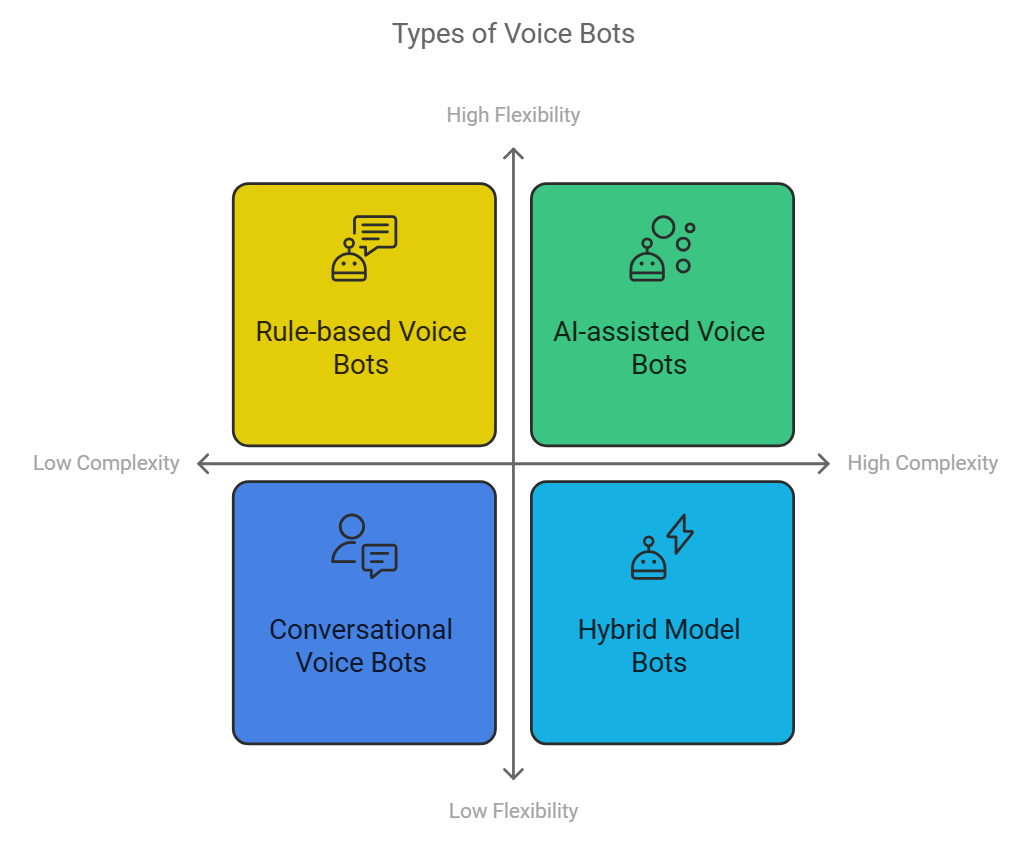 As voice bot technology has evolved, different types have emerged to cater to various business needs and use cases. At MissNoCalls, we offer a range of voice bot solutions to meet the diverse requirements of our clients. Let’s explore the main types of voice bots:
As voice bot technology has evolved, different types have emerged to cater to various business needs and use cases. At MissNoCalls, we offer a range of voice bot solutions to meet the diverse requirements of our clients. Let’s explore the main types of voice bots:1. Rule-based Voice Bots
- These bots follow pre-defined rules and decision trees to handle user interactions.
- Best suited for simple, straightforward tasks with limited variability.
- Pros: Easy to set up, predictable responses.
- Cons: Limited flexibility, can struggle with complex or unexpected queries.
- Utilize artificial intelligence to understand and respond to user inputs more dynamically.
- Can handle a wider range of queries and adapt to different contexts.
- Pros: More flexible than rule-based bots, can understand natural language better.
- Cons: Require more data and training to function effectively.
- Powered by advanced natural language processing and machine learning algorithms.
- Can engage in more natural, human-like conversations.
- Pros: Highly adaptable, can handle complex interactions, and provide personalized experiences.
- Cons: More complex to develop and maintain, require significant training data.
- Combine rule-based systems with AI capabilities for optimal performance.
- Use rules for common, straightforward tasks and AI for more complex interactions.
- Pros: Balance of reliability and flexibility, can be customized for specific business needs.
- Cons: Require careful design to seamlessly integrate both rule-based and AI components.
Applications of Voice Bots
Voice Bot Adoption Rates by Industry
Voice bots have found applications across various industries, revolutionizing how businesses interact with their customers and streamline operations. Here are some key applications:1. Customer Service and Support
- 24/7 customer support for handling inquiries, troubleshooting, and issue resolution.
- Example: MissNoCalls’ AI-powered customer service bots can handle a wide range of customer queries, reducing wait times and improving satisfaction.
- Patient scheduling and appointment reminders.
- Medication reminders and adherence tracking.
- Symptom checking and preliminary health assessments.
- Example: Our healthcare-specific voice bots can manage patient schedules and provide medication reminders, improving patient care and reducing administrative burdens.
- Product recommendations and information.
- Order tracking and status updates.
- Voice-based shopping assistance.
- Control of smart home devices (lights, thermostats, security systems).
- Voice-activated routines and schedules.
- Account balance inquiries and transaction history.
- Bill payments and fund transfers.
- Fraud alerts and security notifications.
- Flight and hotel bookings.
- Travel information and itinerary management.
- Hotel service requests and concierge services.





